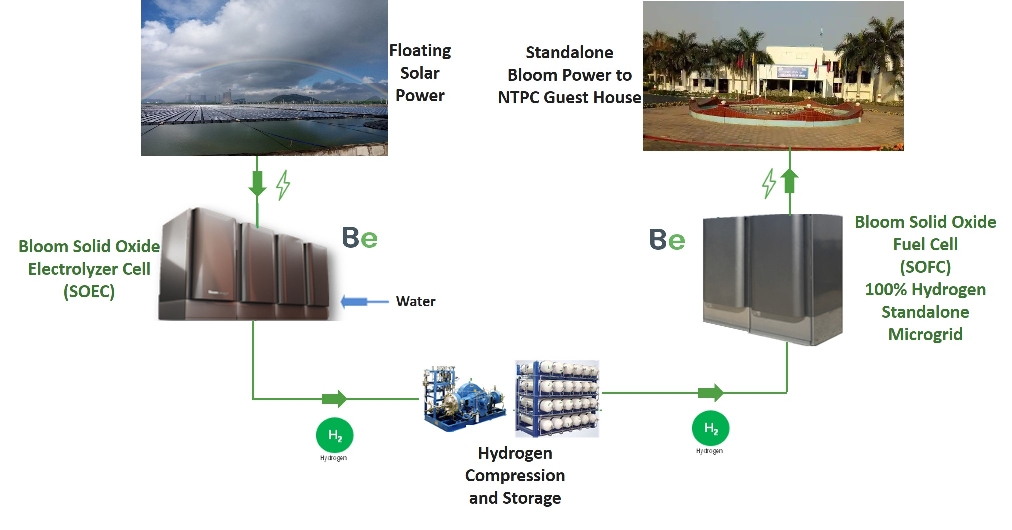Bloom Energy announced that NTPC has selected Bloom’s electrolyzer and hydrogen-powered fuel cell technologies for the country’s first green hydrogen-based energy storage deployment.
The project is designed to explore large-scale, off-grid hydrogen energy storage and microgrid projects at strategic locations throughout the country, a release from Bloom Energy said.
Technology
The collaboration will utilize Bloom Energy’s solid oxide, high temperature electrolyzer to generate green hydrogen from renewable electricity produced by a nearby floating solar farm. The hydrogen will then be converted into carbon neutral electricity without combustion through Bloom Energy’s hydrogen fuel cells to power NTPC’s Guest House, a local accommodation intended for use by NTPC employees and guests. The project is expected to commence in 2022 in Simhadri, Visakhapatnam, India.
RTC power
The solar farm coupled with Bloom Energy’s electrolyzer and hydrogen fuel cells is intended to operate around the clock. At scale, the combination could enable long duration clean energy storage and resilient power for businesses, residential neighborhoods, dense urban areas, and remote and island communities.
Hydrogen is a natural complement to renewable sources of energy, leveraging excess peak power created during the day for conversion into hydrogen to provide pollution-free, reliable power that provides long-duration storage.
Cost-effective hydrogen
Bloom Energy’s high-temperature electrolyzer produces hydrogen more efficiently than low-temperature PEM and alkaline electrolyzers. Because it operates at high temperatures, the Bloom Electrolyzer requires less energy to break up water molecules and produce hydrogen. Electricity accounts for nearly 80 percent of the cost of hydrogen from electrolysis. By using less electricity, hydrogen production becomes more economical and will accelerate adoption.
Electricity by non-combustion
Bloom Energy Servers – solid oxide fuel cells that combine ambient air with a fuel source, such as natural gas, biogas, hydrogen, or a blend of fuels – produce electricity through a non-combustion electrochemical reaction, resulting in reduced carbon emissions, harmful air pollutants, and water use compared to grid alternatives. When hydrogen is used as a fuel source, Bloom Energy Servers emit zero carbon.
Featured illustration provided by Bloom Energy

